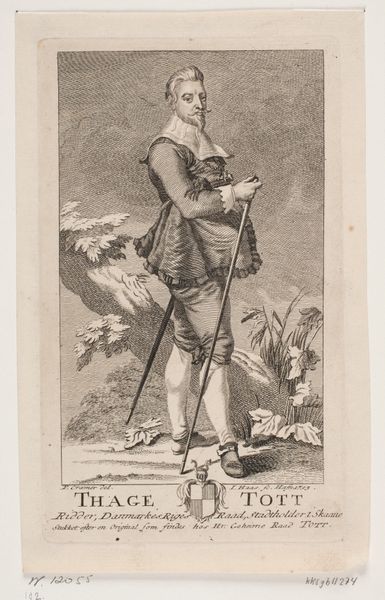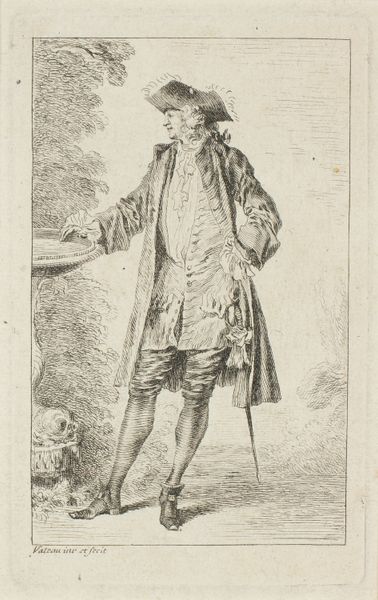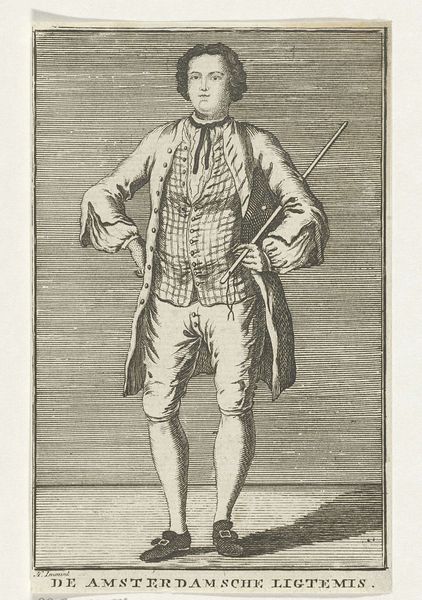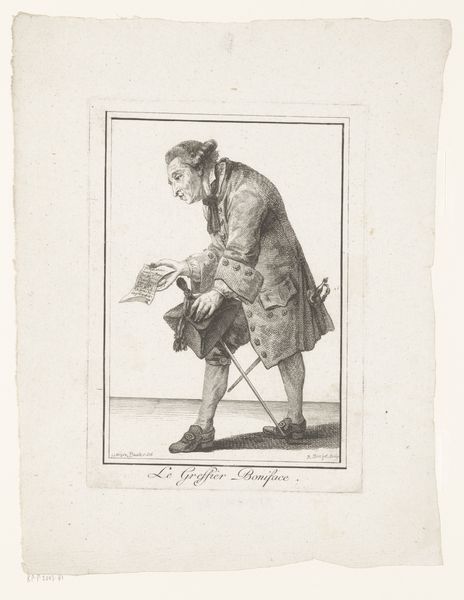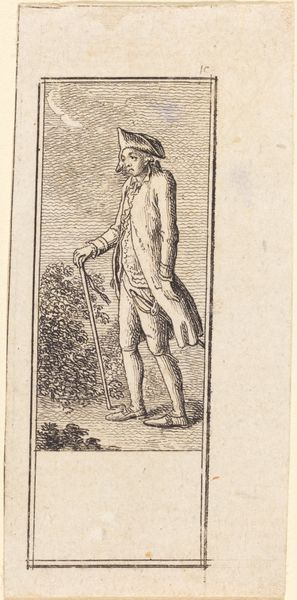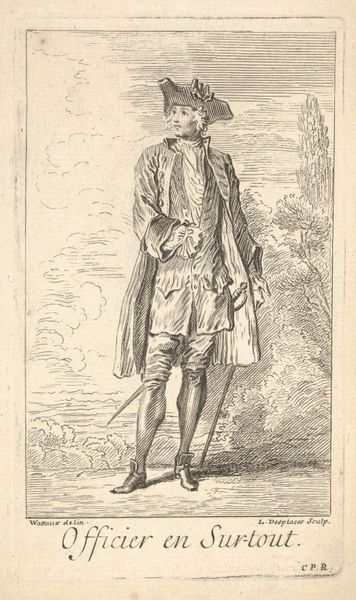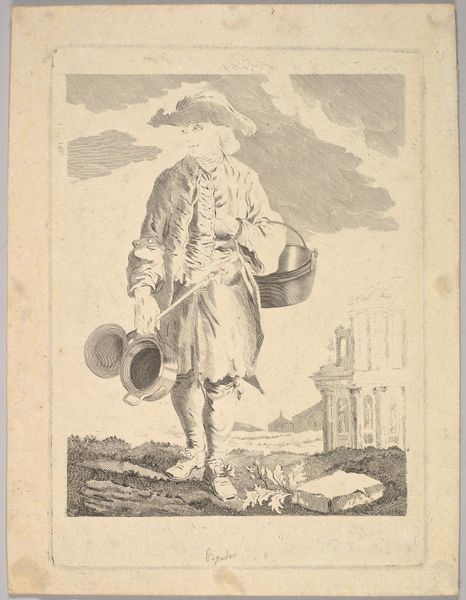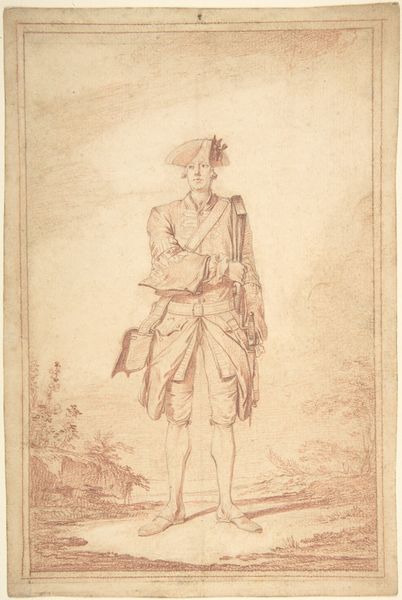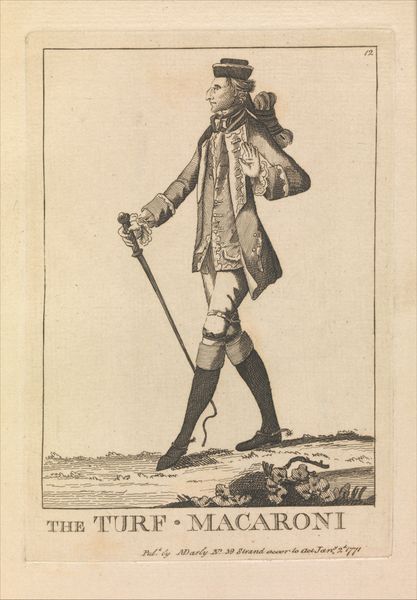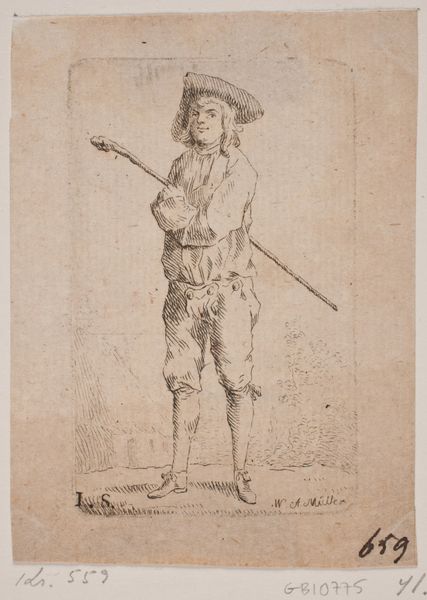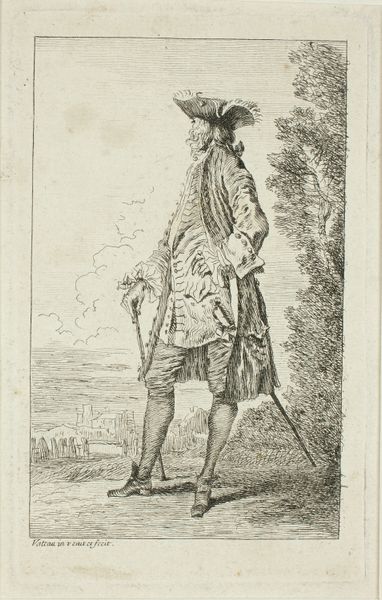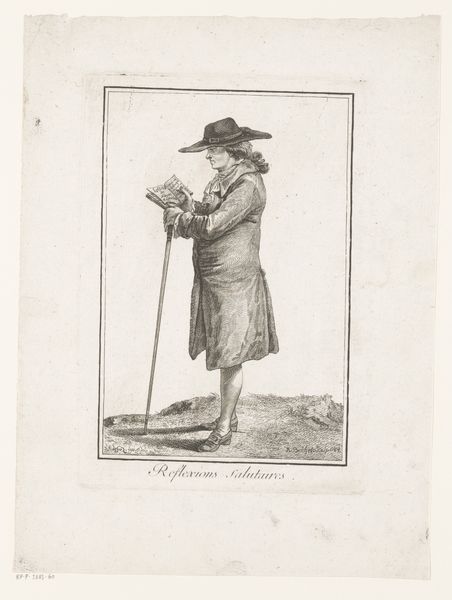
Portrait of Edmond Burke 1810 - 1820
0:00
0:00
drawing, print, paper, pencil
#
portrait
#
drawing
#
neoclacissism
# print
#
paper
#
romanticism
#
pencil
Dimensions: 6 5/8 x 4 5/8 in. (16.9 x 11.7 cm.)
Copyright: Public Domain
Curator: Looking at this image, I'm immediately struck by its somber mood. The figure is positioned in a way that seems almost melancholic, gazing off into the distance. What draws you in initially? Editor: I find myself intrigued by the symbolism here. This is a print depicting Edmond Burke, dating from sometime between 1810 and 1820. We see him not just as an individual, but within a meticulously rendered setting. Burke holds a cane and hat, standing next to the building entrance; each object becomes an attribute. Curator: Precisely. The placement of Burke is essential. Contextualizing him is vital. Who was this person in the drawing? How might the artist be conveying the spirit of that period? Editor: Burke was, of course, a prominent political philosopher and statesman. It seems relevant that this image presents him outdoors with building detail on the paper medium. Considering these visual elements, how does this influence readings of power, knowledge and position? Curator: I'm drawn to that exact question. What power dynamic can be observed via composition? Romanticism in art reflects emotionality of that period in Europe and this Romantic-neoclassical style often presented the figures with a more subdued emotionality. Burke is very plainly dressed for the drawing to focus on him being an outdoors man in a state of thought, therefore the dress code isn't overly complex. Editor: It suggests an inherent association between the man and the structure as his knowledge. In the context of neoclassicism and the emerging Romantic sensibilities, this portrayal departs somewhat from depictions of classical heroes or romanticized intellectuals. Curator: That's right, the era grappled with questions of governance and individual freedoms. The print seems very much interested in the mind, interior states. Burke's somewhat reserved stance seems to suggest an intellect weighing matters of state but very much contained and reserved for that purpose, as the placement beside building emphasizes this relation. It captures him as a person deeply enmeshed in those ideological currents. Editor: His gaze invites introspection, hinting at the burdens of leadership and societal influence. His location and items indicate the person but do nothing to reveal other elements. Curator: It gives a potent commentary of history. Editor: It's a lasting cultural encapsulation.
Comments
No comments
Be the first to comment and join the conversation on the ultimate creative platform.

